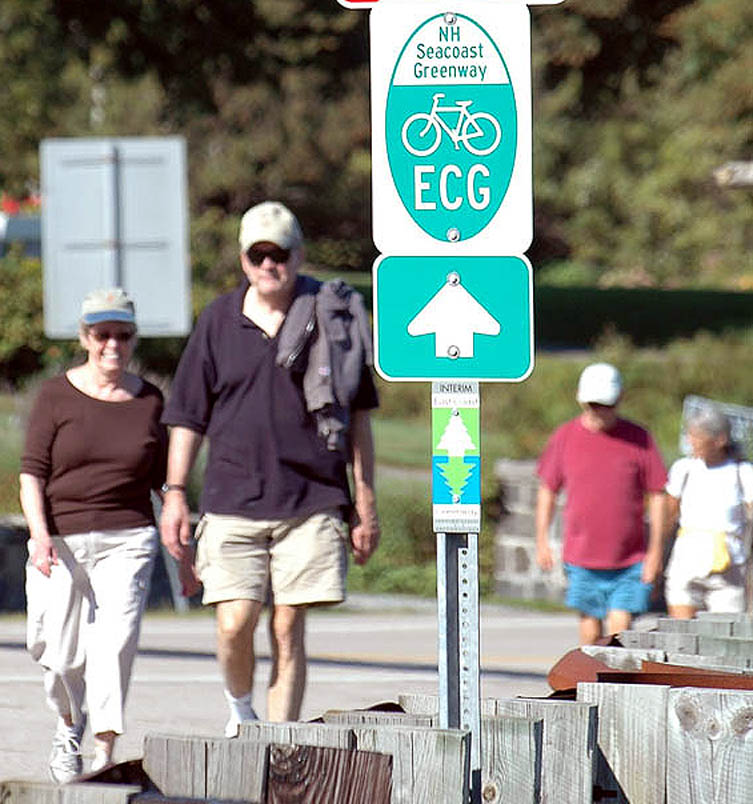Active Transportation
Active Transportation refers to human-powered transportation like walking and biking. An Active Transportation System is one that connects the places where people live, learn, work, shop, and play by providing safe and convenient walking and bicycling facilities.
It seems silly to think about walking. After all, don’t we just put one foot in front of the other? What about biking, didn’t we all learn how to do that in childhood? The answer to both questions is yes, but walkers and bicyclists now live in a time where safety and efficiency must be considered. Imagine trying to access a bus stop near your home with no or broken sidewalks, lack of crosswalks or other traffic controls, and heavy traffic, that’s an accident waiting to happen, and most will avoid the situation. This is why Complete Streets are streets for everyone. Complete Streets is an approach to planning, designing, building, operating, and maintaining streets that enables safe access for all people who need to use them, including pedestrians, bicyclists, motorists and transit riders of all ages and abilities.
Walking is the oldest and most basic form of transportation that plays a multifaceted role in society including transportation, health and fitness, social interaction, mental health, cultural & recreational activities, economic and environmental impacts. Our world has become more populated, our cities denser and the number of vehicles on the road has increased astronomically. To ensure that people can walk safely in communities, planning and resources are required for sidewalks, non-motorized trails and assistive technology for people living with disabilities. Walking is free, but ensuring safe and effective access for all requires public investment.
Biking, or the concept of travel on two wheels dates to the Late 18th Century, but the first pedal-powered bicycle wasn’t created until 1863 by the French Blacksmith Pierre Michaux and his sone Ernest. These first bicycles were called “Boneshakers” because of their iron frames and wooden wheels. As if that wasn’t uncomfortable enough, the 1870’s ushered in the High-Wheeler, featuring a large front wheel and a smaller back wheel. Eventually the new technology (pneumatic tires) ushered in the bicycle boom of the 1890s, but it wasn’t until the late 20th Century that an increased awareness of environmental issues and the promotion of healthy lifestyles led to biking advocacy movements and the use of bike lanes, rail trails and bike-share programs. The 21st century brought the increase of advocacy, construction of biking and walking trails and e-bikes (battery operated bicycles). Today, people rely on biking on and off road to commute to work, secure basic needs, exercise and socialize.
Walking & Biking in New Hampshire
Sidewalks, shoulders, pathways and trails are typically controlled by local municipalities, the state, or a partnership of local, state and advocacy groups like trail alliances or snowmobile clubs. Many states and municipalities have Complete Street Policies in place to guide development of streets for everyone. New Hampshire does not have a complete streets policy, but through its department of transportation there is a Complete Streets Advisory Committee. Its mission is to support bicycling, walking and transit as safe, convenient, and sustainable forms of transportation that increase New Hampshire’s livability, increase economic activity, and improve public and environmental health. It seeks to improve the state through education, public outreach, collaboration, policy and construction.
NH Rail Trails are developed within inactive and sometimes active rail corridors. Typically, they connect several communities, but often they connect to other trail systems forming a comprehensive network of trails. These can even be national networks like the NH Seacoast Greenway, which is part of the East Coast Greenway connecting NH to 15 states and 450 municipalities on its 3,000-mile journey between Maine and Florida. Rail trails are used for both commuting and recreation in New Hampshire while contributing to local economies and reducing greenhouse gases.

